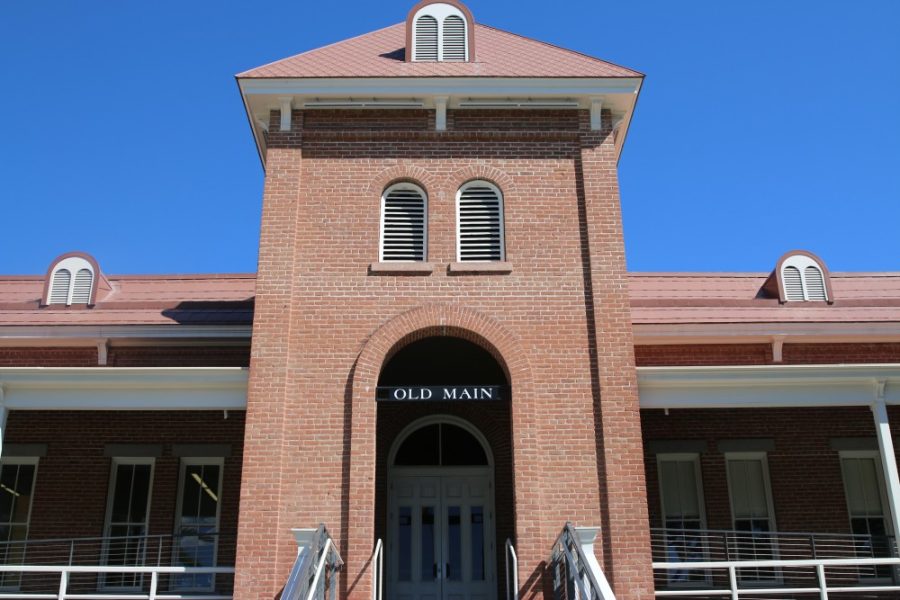1. Old Main
Old Main is the most historic building on the University of Arizona campus. Having opened in 1891 as the School of Agriculture, it was the first building on the property.
Home to only 32 students and six faculty members, Old Main stood solitary on the desert plain. But over the next century or so, as the rest of campus was built around it, Old Main would bear witness to all the incredible tragedies and immeasurable successes that befell the UA and its students.
Old Main is older than the state of Arizona itself, which only gained statehood in 1912, and is one of the oldest academic buildings in the nation.
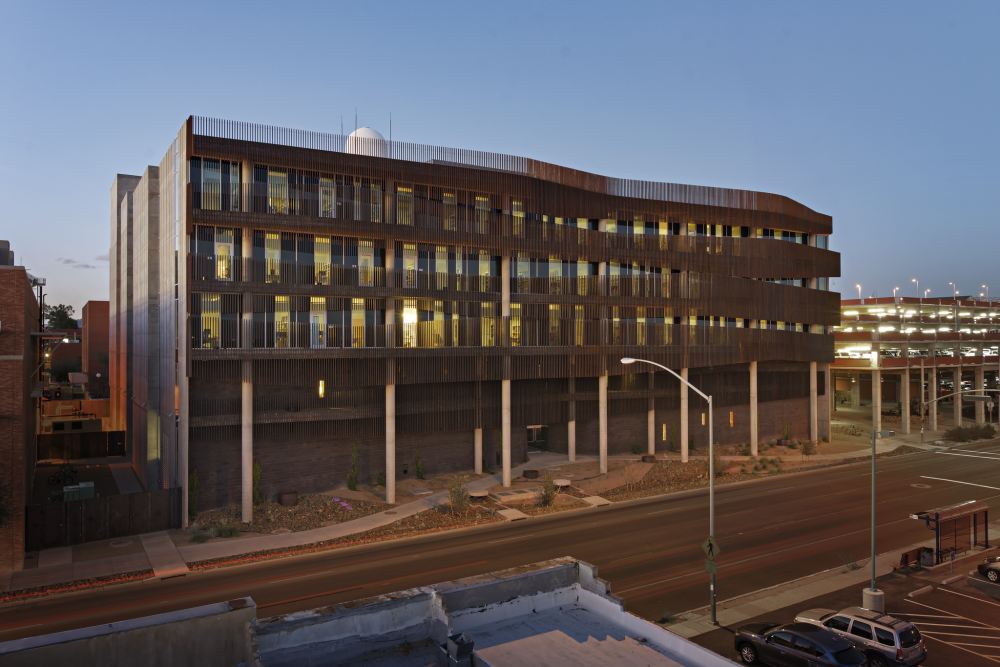
2. Environment and Natural Resources 2
The UA is dedicated to environmental sustainability, and as a monument to that dedication, the ENR2 building was constructed.
According to the Institute of the Environment, ENR2 is built like a natural slot canyon and uses the desert environment to its advantage with energy efficient architecture, rainwater harvesting and low-flow faucets.
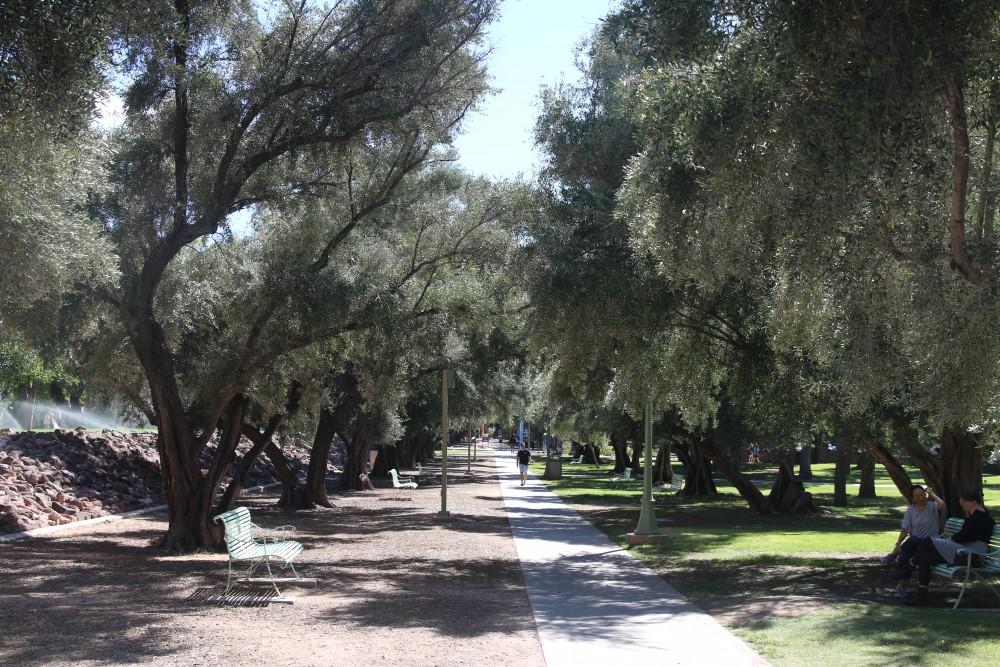
3. Olive Trees
According to Elizabeth Davison, Founding Director of the UA Campus Arboretum, the olive trees on the west side of campus were first planted in 1895 by Robert Forbes, the first head of the Agriculture Experiment Station.
The result of an experimental assessment of Mediterranian plants in Tucson, the olive trees are a living reminder of how the UA has influenced daily life in Arizona through science and research.
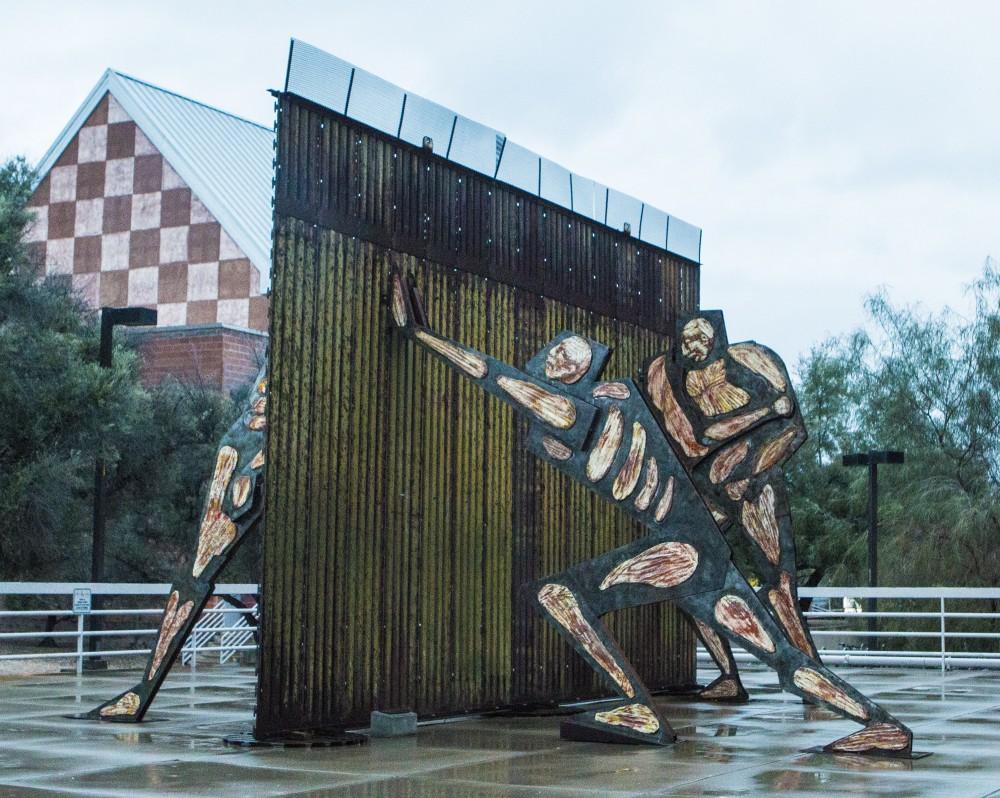
4. Border Dynamics Sculpture
As a university in the borderlands, the “Border Dynamics” sculpture near the Harvill building is one of the most important public works on campus, according to the UA Museum of Art.
Giant human forms, their flesh exposed, press themselves against a border wall. It is difficult to tell whether the figures on either side are trying to push the wall down or hold it up — an intentional result of the piece.
The UA’s location near the border places it as one of the most prominent academic institutions in borderland research.
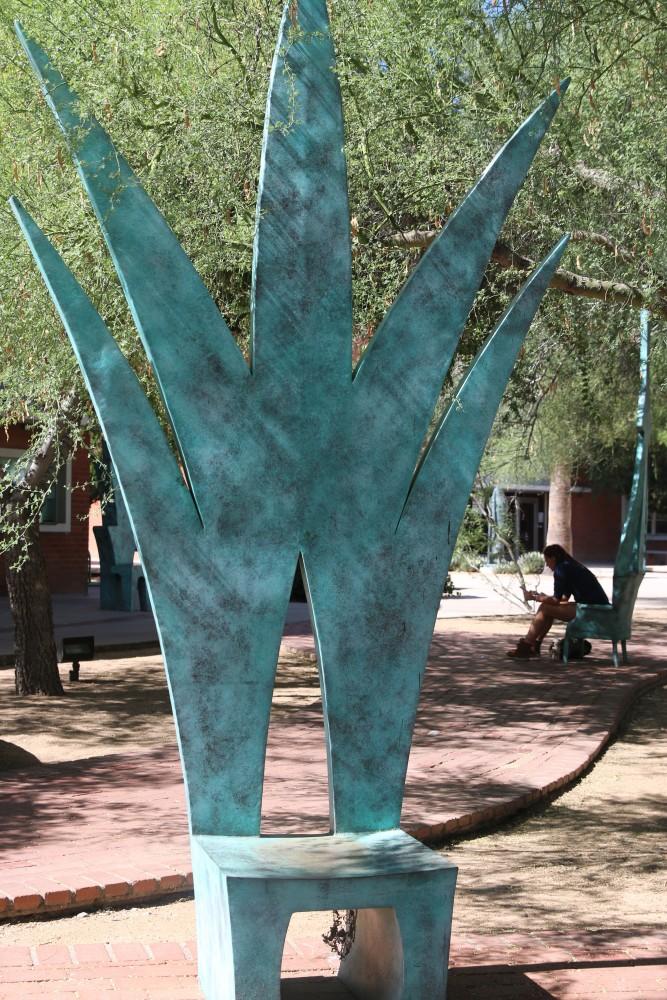
5. Front Row Center
From the Front Row Center, one can sit in that courtyard and see the most active part of the arts district. The work was built by Tucson native Barbara Grygutis and commissioned to provide an interactive work of art that was representative of the arts at the UA.
The blue tile benches and bronze statuary chairs are woven beneath a canopy of native trees. Across from them, a great collection of other permanent public art installations can be seen.
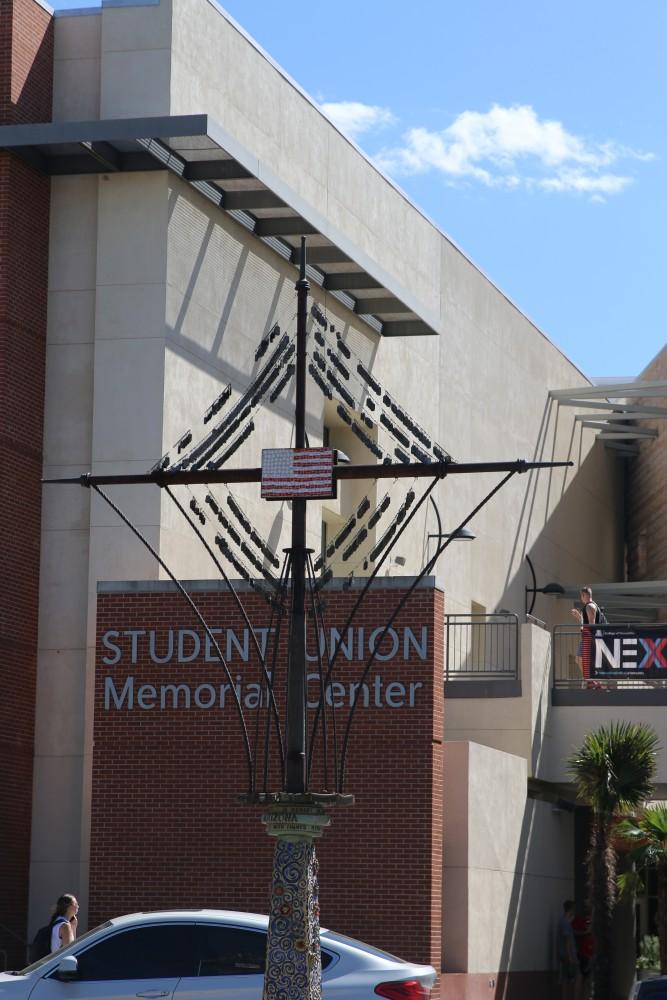
6. Student Union Memorial Center
The Student Union Memorial Center is where students spend much of their time, but it is so much more than that.
Though originally built in 1951, the Student Union was renamed and renovated in 1999 in honor of the U.S.S. Arizona, a navy battleship that was destroyed at Pearl Harbor in 1941.
The renovations were modeled after the battleship itself and has several public installations dedicated to those lives lost at Pearl Harbor, including dog tag windchimes and the historic bell rescued from the wreckage of the U.S.S. Arizona.
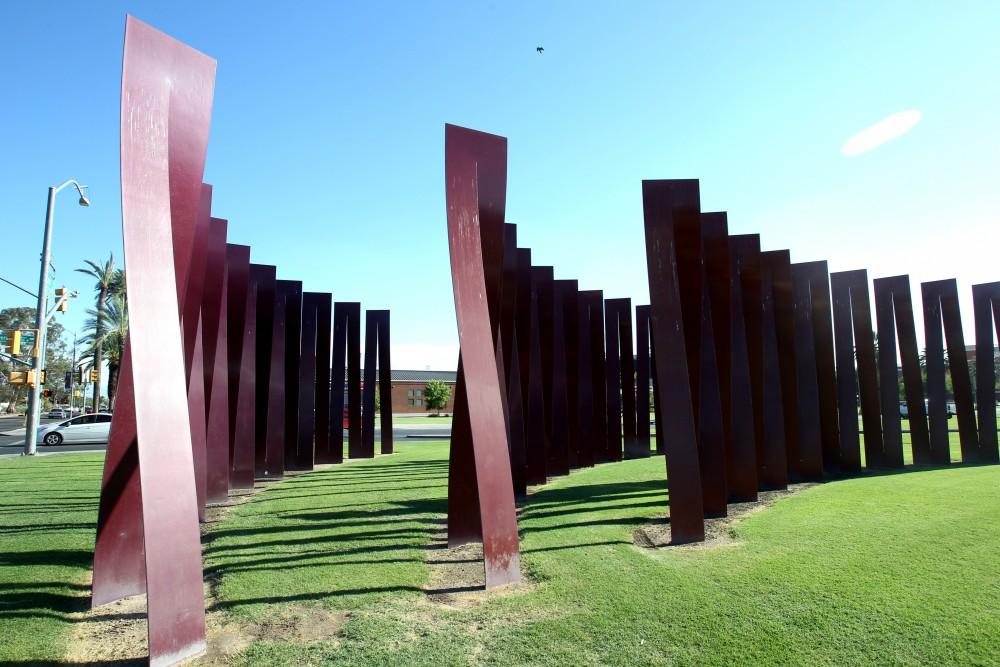
7. Curving Arcades
For the past 20 years, the “Curving Arcades” have been called many names by passers-by — the clothespins, the tweezers, the wishbones. They were installed by Athena Tacha as the “Curving Arcades (Homage to Bernini).”
The installation was incredibly controversial at the time of its inception, but the giant wishbones are now a local landmark.
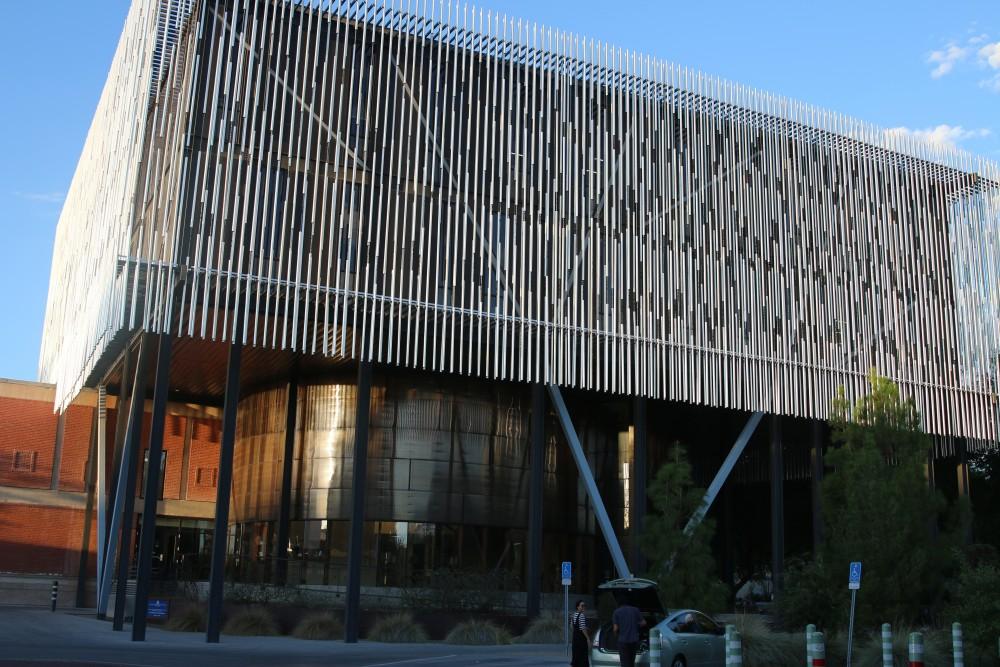
8. Tree Ring Lab
The history of dendrochronology at the UA traces as far back as 1937, but the far newer Bryant Bannister Tree-Ring building, home to the esteemed Laboratory of Tree Ring Research, is still a beauty.
The building was designed to resemble a treehouse, with hanging metal tubes like palo verde trees, a round trunk and offices suspended in the air. At night, the trunk illuminates bright yellow from the inside of the building.



